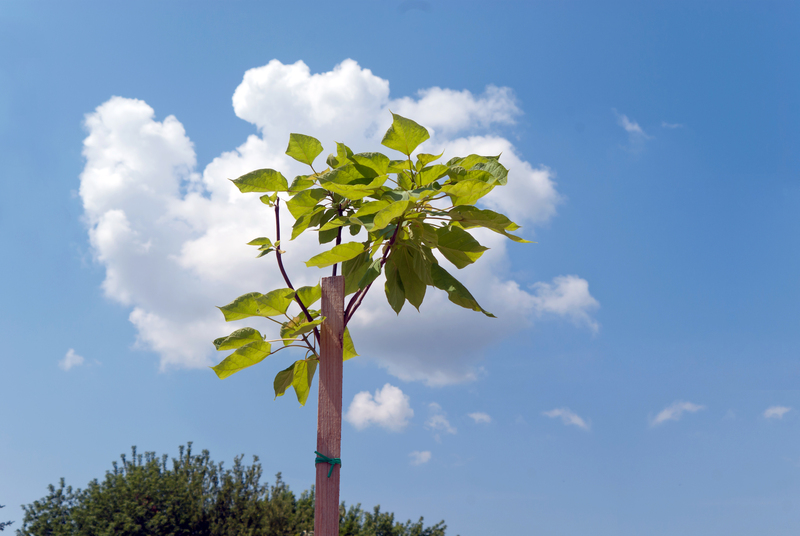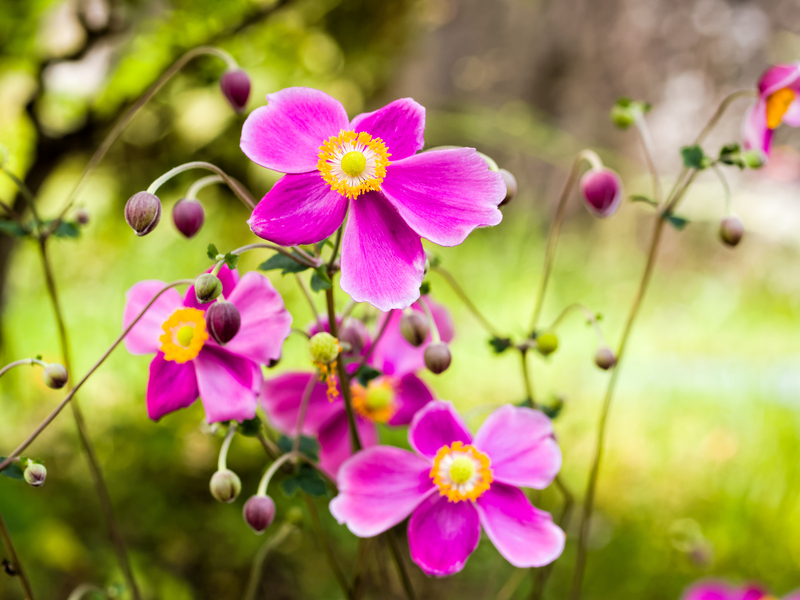Eco-Gardening: A New Frontier in Climate Change Mitigation
Posted on 01/07/2025
Eco-Gardening: A New Frontier in Climate Change Mitigation
Climate change continues to be one of the biggest challenges of our century. As global temperatures rise, communities, scientists, and policymakers are constantly searching for innovative and sustainable solutions. Among the many climate action strategies emerging today, eco-gardening stands out as a beacon of hope. This simple yet powerful approach offers a unique blend of environmental, social, and economic benefits, making it a revolutionary tool in the fight against climate change. In this comprehensive article, we'll explore how eco-gardening practices can contribute to mitigating climate change, while offering tips, techniques, and insights for creating your own eco-friendly garden.
What Is Eco-Gardening?
Eco-gardening encompasses a spectrum of gardening practices aimed at creating sustainable, low-impact, and resource-efficient gardens. These gardens not only beautify our surroundings but also serve as vital tools for carbon sequestration, biodiversity conservation, and ecosystem restoration. The core principle of eco-gardening is to work in harmony with nature, using techniques that reduce waste, conserve water, and support native wildlife.
Key Components of Eco-Gardening
- Soil Health: Building rich, organic soils that capture carbon and nourish plants
- Biodiversity: Planting a variety of native species and supporting pollinators
- Water Conservation: Employing methods such as rain gardens, mulching, and drip irrigation
- Waste Reduction: Composting and minimizing synthetic inputs
- Renewable Resources: Using natural fertilizers and eco-friendly practices

How Eco-Gardening Helps Mitigate Climate Change
At its core, eco-gardening works as a miniature ecosystem that mitigates the effects of climate change in several impactful ways. Here's how your garden can make a big difference:
1. Carbon Sequestration
Plants absorb carbon dioxide (CO2) during photosynthesis and store it in their leaves, stems, roots, and soil. By converting barren patches or traditional lawns into dense, green gardens, you create more opportunities for carbon capture. Eco-gardening practices such as no-till gardening, cover cropping, and mulching enrich the soil with organic matter, helping lock away more carbon below ground.
2. Reduced Greenhouse Gas Emissions
Traditional gardening often relies on chemical fertilizers and pesticides, which are derived from fossil fuels and contribute to greenhouse gas emissions. In contrast, eco-gardeners use natural alternatives and organic matter, drastically reducing their carbon footprint. Additionally, by composting kitchen and yard waste, eco-gardeners prevent methane emissions from landfills.
3. Enhanced Urban Biodiversity
Eco-gardening supports a wide range of native flora and fauna, restoring natural habitats within urban and suburban areas. This bolstered biodiversity increases resilience against pests and diseases, reduces the need for chemical treatments, and helps maintain ecological balance.
4. Rainwater Management
Urbanization has led to sprawling concrete landscapes that accelerate runoff and overwhelm drainage systems. Eco-gardens employ techniques like rain gardens, swales, and permeable surfaces to absorb rainfall, recharge groundwater, and prevent erosion. Proper rainwater management helps reduce flooding and improves water quality downstream.
5. Localized Cooling Effects
Lush, vegetated spaces naturally cool their immediate environment through shade and evapotranspiration. This effect, known as the urban heat island mitigation effect, helps counteract rising temperatures in densely developed areas.
Eco-Gardening Techniques: Building a Climate-Resilient Garden
Soil Building and Composting
Healthy soil is the cornerstone of eco-friendly gardening. Start by testing your soil and amending it with natural compost. Composting not only diverts organic waste from landfills but also boosts soil fertility. Layers of organic material--like grass clippings, leaves, and kitchen scraps--enrich the soil, increasing its capacity to store carbon.
Native Plant Selection
Choose plants indigenous to your region. Native plants are naturally adapted to local climates and soils, requiring less water, fertilizer, and maintenance. They also provide crucial food and shelter for pollinators and other wildlife.
- Research local flora: Consult regional planting guides
- Mix perennials and annuals: Create year-round interest and habitat diversity
- Layer plants: Combine groundcovers, shrubs, and trees for structural complexity
Water-Saving Strategies
Freshwater scarcity is a growing concern around the globe. Smart water management in eco-gardens conserves this precious resource:
- Mulch: Apply organic mulch to retain soil moisture and suppress weeds
- Drip irrigation: Target water delivery to plant roots and minimize evaporation
- Rain barrels: Collect and reuse rainwater for garden irrigation
- Rain gardens: Design low-lying areas to soak up and purify runoff
Organic Pest Control
Ditch synthetic chemicals in favor of natural solutions. Eco-gardens attract beneficial insects, birds, and amphibians that help keep pest populations in check.
- Companion planting: Grow compatible plants together to deter pests
- Encourage predators: Install birdhouses, bee hotels, and ponds
- Neem oil and insecticidal soap: Use plant-derived products for temporary infestations
Reducing Lawn Area
Lawns are resource-intensive, demanding frequent mowing, watering, and fertilizing. Replace portions of your lawn with wildflower meadows, vegetable beds, or native plant islands. This transition vastly increases habitat value while decreasing environmental impact.
The Role of Eco-Gardening in Urban Communities
The benefits of eco-friendly gardening extend far beyond individual households. When adopted at scale, urban eco-gardening can transform neighborhoods, providing a range of climate adaptation and mitigation services. Community gardens, rooftop farms, and public green spaces all contribute to cleaner air, vibrant biodiversity, and improved mental well-being.
Case Studies of Urban Eco-Gardening Initiatives
- New York City's GreenThumb: This program supports over 600 community gardens citywide, sequestering carbon and producing local food.
- Singapore's City in a Garden: Rooftop and vertical gardens cool urban heat and enhance biodiversity in one of Asia's densest metropolises.
- London's Edible Bus Stops: Abandoned spaces are turned into community gardens, providing fresh produce and natural cooling zones.
Why Eco-Gardening Is Essential in the Fight Against Climate Change
Eco-gardening is much more than a hobby--it's a grassroots movement with profound global implications. As traditional agriculture and urban development put increasing pressure on valuable ecosystems, small-scale, climate-resilient gardens provide practical, hands-on solutions that anyone can implement.
- Scalable impact: Each small garden acts as a climate-action node; collectively, they form green networks across regions.
- Empowerment: Eco-gardening allows citizens to take meaningful action in their own backyards, fostering environmental stewardship.
- Education: Community and school gardens serve as living classrooms, teaching sustainability and biodiversity principles.
- Food security: Urban eco-gardens supplement food production, reducing reliance on distant supply chains vulnerable to climate disruptions.

How to Start Your Own Eco-Garden
Ready to join the new frontier of climate change mitigation through eco-gardening? Here's a step-by-step guide to get you started:
Step 1: Assess Your Space
Evaluate available sunlight, soil type, and existing vegetation. Even balconies and rooftops can host miniature eco-gardens.
Step 2: Set Goals
Do you want to grow food, attract pollinators, create a peaceful retreat, or all of the above? Clarifying your vision will shape your plant selection and garden design.
Step 3: Plan and Design
- Draw a site plan with desired elements like compost bins, water features, and seating
- Choose native plants suited to your climate and soil
- Include layers for habitat diversity: trees, shrubs, perennials, and groundcovers
Step 4: Build Healthy Soil
Add compost, leaf mold, and aged manure to increase organic matter. Avoid synthetic fertilizers that disrupt soil microbial life.
Step 5: Install Water-Wise Features
Set up a rain barrel, drip irrigation, and rain gardens. Mulch deeply to maintain moisture and feed the soil.
Step 6: Practice Organic Gardening
Use only natural pest and weed control methods. Encourage beneficial insects and wildlife by providing water, shelter, and diverse plantings.
Step 7: Engage and Share
Connect with local gardening clubs, community groups, or online forums. Share your successes, seeds, and enthusiasm for the eco-gardening revolution.
Conclusion: From Backyards to Biodiversity Corridors
With climate change threatening the delicate balance of life on Earth, eco-gardening stands out as an accessible, impactful, and enjoyable path toward a more resilient future. By reimagining our gardens as living laboratories of sustainability, each of us can play an indispensable role in shaping a healthier planet. Whether you tend a small container garden or help transform your entire community, embracing eco-gardening techniques is a vital step in meeting the climate challenges of our time.
Start your own eco-garden today--transforming your personal patch of earth into a powerful force for climate change mitigation and ecological renewal.
Further Reading and Resources
- "Bringing Nature Home" by Douglas Tallamy
- The Xerces Society's Pollinator-Friendly Plant Lists
- U.S. Environmental Protection Agency: Green Infrastructure
- National Wildlife Federation - Garden for Wildlife
Eco-gardening is more than a trend--it's the next frontier in climate change mitigation. Join the movement and make your garden a part of the global solution.

